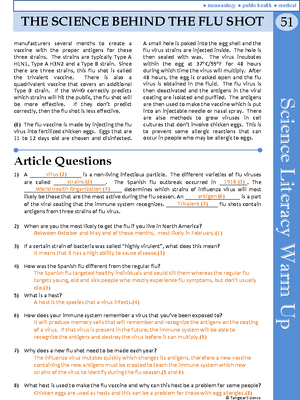- Information
- AI Chat
Was this document helpful?
Seasons 3DSE finished - student gizmos answer key
Subject: Earth Science
999+ Documents
Students shared 1701 documents in this course
Level:
Standard
Was this document helpful?

2019
Name: ______________________________________ Date: ________________________
Student Exploration: Seasons in 3D
Vocabulary: axis, equinox, latitude, Northern Hemisphere, revolve, rotate, solar energy, solar
intensity, Southern Hemisphere, summer solstice, winter solstice
Prior Knowledge Question (Do these BEFORE using the Gizmo.)
Both New Zealand and Argentina are in the Southern Hemisphere (south of the equator).
1. What time of year would you plan a ski vacation in New Zealand? Winter
2. What time of year would you visit the beaches of Argentina? Summer
Gizmo Warm-up
Seasons in the Southern Hemisphere are
different from seasons in the Northern
Hemisphere (north of the equator.) Using the
Seasons in 3D Gizmo, you will discover what
causes the seasons and learn why seasons are
different in each hemisphere.
To begin, move the Sim. speed slider all the
way to the right. Click Play ( ) and observe
the SIMULATION pane.
1. Describe Earth’s movements: earth tilts forward and also rotate towards the sun
Earth revolves around the Sun and rotates on its axis. On the SIMULATION pane, the axis
is represented by a red line.
2. Click Reset ( ), and then click Play again. Look at the side view of Earth at the bottom of
the SIMULATION pane.
A. What do you notice about Earth’s axis as Earth revolves around the
Sun?
earth’s axis does not move.
B. When is the Northern Hemisphere tilted toward the Sun? May through
September
C. When is the Southern Hemisphere tilted toward the Sun? November
through
D. march




![[Ocean Exploration Gizmo] Ocean Mapping SE (2020](https://d20ohkaloyme4g.cloudfront.net/img/document_thumbnails/6dd0b2da9e7ded42a256186884b186cb/thumb_300_388.png)


